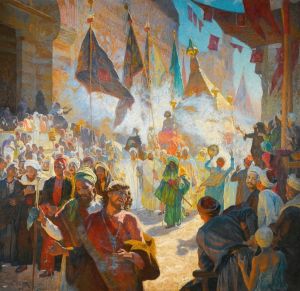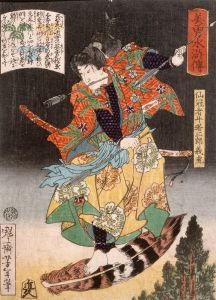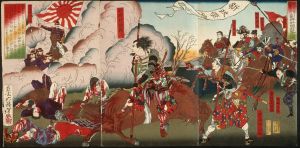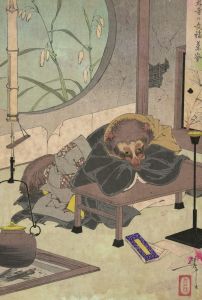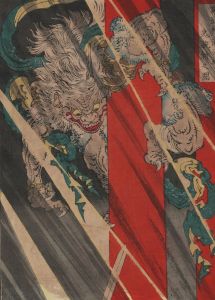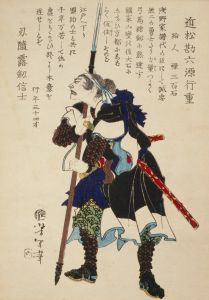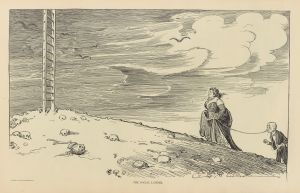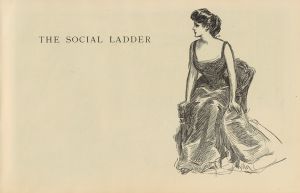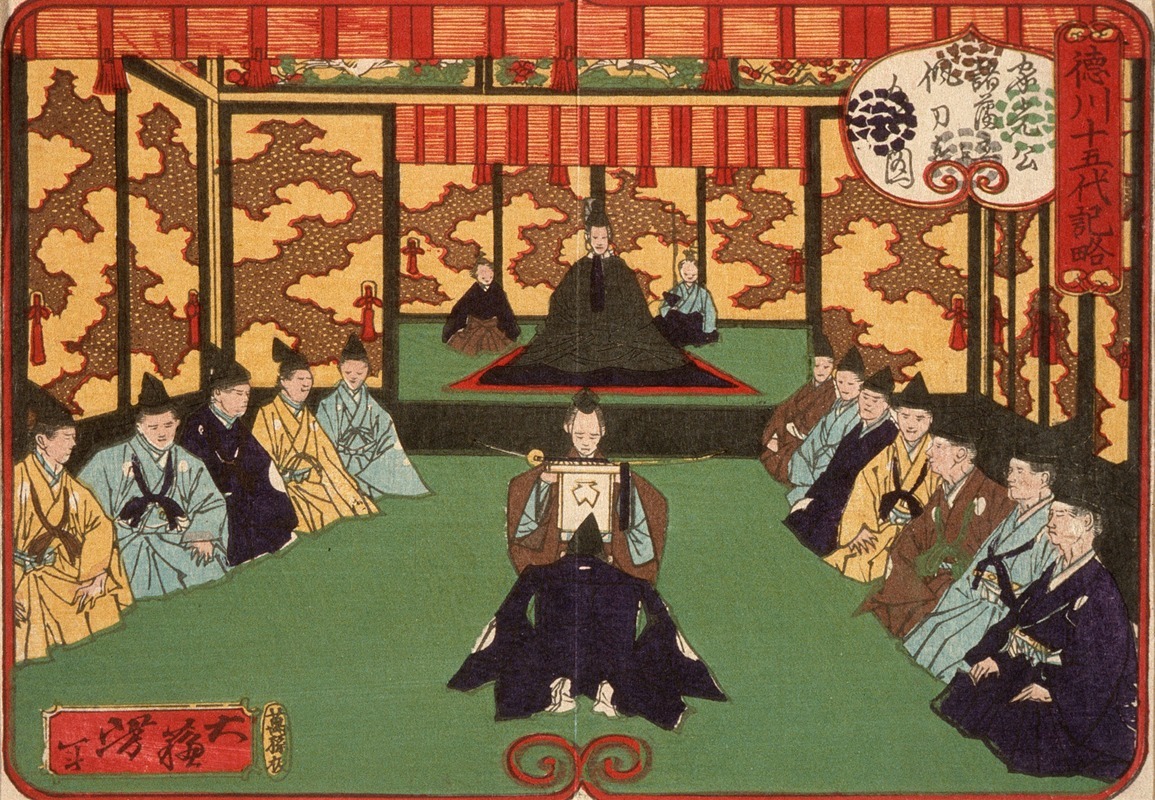
Tokugawa Iemitsu Receiving Lords in Audience
A hand-painted replica of Tsukioka Yoshitoshi’s masterpiece Tokugawa Iemitsu Receiving Lords in Audience, meticulously crafted by professional artists to capture the true essence of the original. Each piece is created with museum-quality canvas and rare mineral pigments, carefully painted by experienced artists with delicate brushstrokes and rich, layered colors to perfectly recreate the texture of the original artwork. Unlike machine-printed reproductions, this hand-painted version brings the painting to life, infused with the artist’s emotions and skill in every stroke. Whether for personal collection or home decoration, it instantly elevates the artistic atmosphere of any space.
"Tokugawa Iemitsu Receiving Lords in Audience" is a woodblock print by the renowned Japanese artist Tsukioka Yoshitoshi, who was active during the late Edo and early Meiji periods. Yoshitoshi is celebrated for his innovative approach to the traditional ukiyo-e art form, and his works often depict historical and legendary themes with a dramatic flair. This particular print is part of Yoshitoshi's series that explores historical events and figures from Japan's rich past.
The artwork portrays Tokugawa Iemitsu, the third shogun of the Tokugawa dynasty, who ruled Japan from 1623 to 1651. Iemitsu is a significant figure in Japanese history, known for consolidating the power of the shogunate and enforcing policies that isolated Japan from much of the outside world, a period known as sakoku. His reign was marked by efforts to centralize authority and reduce the power of the daimyo, the feudal lords of Japan.
In the print, Iemitsu is depicted in a formal audience setting, receiving lords who have come to pay their respects. This scene reflects the hierarchical nature of the Tokugawa shogunate, where the shogun held supreme power over the daimyo, who were required to demonstrate their loyalty and obedience. The setting is likely to be the shogun's castle, a symbol of his authority and the center of political power during the Edo period.
Yoshitoshi's depiction of this historical moment is characterized by his attention to detail and his ability to convey the solemnity and grandeur of the occasion. The composition of the print emphasizes the shogun's elevated status, with Iemitsu seated in a position of prominence, surrounded by his retainers. The lords are shown in a respectful posture, underscoring the rigid social order of the time.
The print is also notable for its use of color and intricate patterns, which are typical of Yoshitoshi's style. His work often combines traditional Japanese aesthetics with influences from Western art, which was becoming more accessible during the Meiji period. This blend of styles is evident in the dynamic composition and the expressive figures that populate the scene.
Yoshitoshi's series, which includes "Tokugawa Iemitsu Receiving Lords in Audience," serves as both an artistic achievement and a historical document, providing insight into the cultural and political landscape of Japan during the Tokugawa shogunate. Through his art, Yoshitoshi captures the essence of a pivotal era in Japanese history, offering viewers a glimpse into the past with a vivid and engaging portrayal.
Overall, this print is a testament to Yoshitoshi's skill as an artist and his ability to bring historical subjects to life. It remains an important work for those interested in Japanese art and history, illustrating the enduring legacy of the Tokugawa shogunate and its impact on the country's development.





